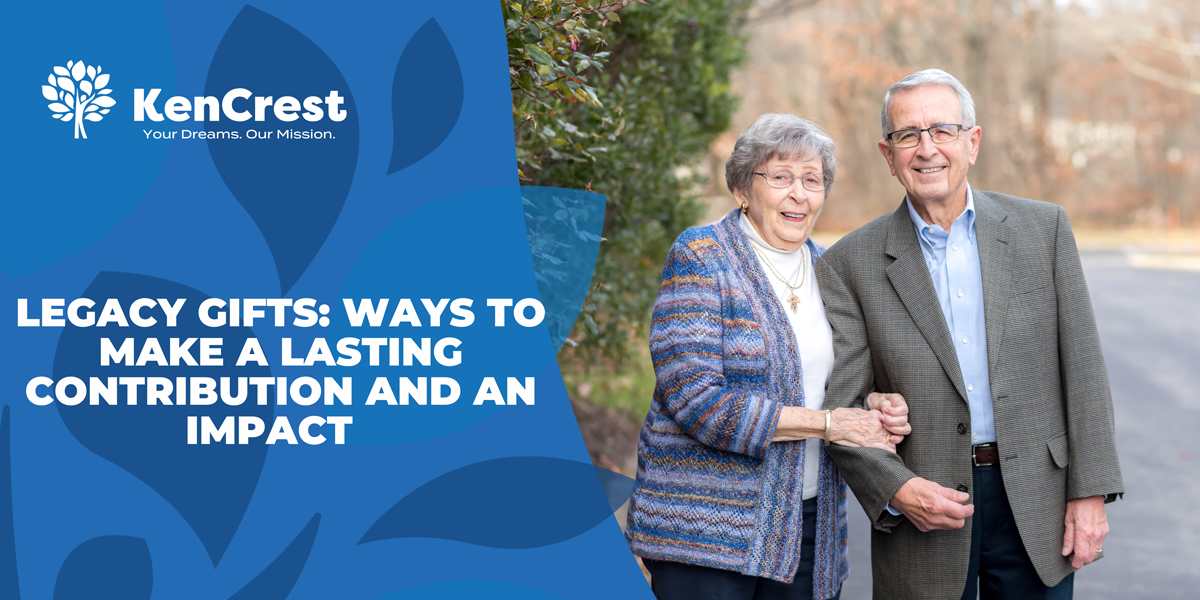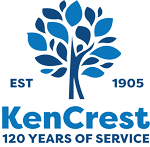
Have you ever wanted to leave a legacy behind? Consider setting up a Legacy Gift and continue impacting the lives of people with IDD for years to come.
By Sydney Kerelo
Do you want to give back to your community or organization but don’t know where to start? Consider planned giving and leave a legacy gift in your will to prepare for your future contributions. This is a great way to maximize your charitable impact and leave a lasting legacy.
Long after someone passes, a Legacy gift will remain. It ensures donors will be remembered for their generosity and support to a nonprofit. At KenCrest, many individuals have left the agency a Legacy gift, and that selflessness has been instrumental to our nearly-125 year history of serving the community.
But What Exactly is Legacy Giving?
Setting up a Legacy gift, or Planned Giving, is a deeply personal act. It involves donating through your will or other formal estate planning designation, a way to contribute a unique and planned gift to an organization when you pass. Typically, a financial planner helps prepare the legacy gift, ensuring it reflects your individual values and desires.
Legacy gifts are typically larger than lifetime donations because they come from various traditional and nontraditional assets, such as insurance policies, retirement assets, equity, or real estate holdings. This flexibility allows you to make a significant contribution in a way that best suits your financial situation and personal preferences.
Why Would You Leave a Legacy Gift?
Most donors choose to leave a legacy with an organization because they want to continue supporting the excellent work of a charity that means something to them. It's a way to make a significant contribution that may not have been possible during their lifetime and can leave a lasting impact on the organization's mission.
Typically, donors begin thinking about legacy gifts when they near retirement age, but anyone can start the process at any time. Wills, specifically, are recommended for all adults. Creating or updating your will is a convenient time to consider Legacy gifts as well.

Are There Different Types of Legacy Gifts?
A person could establish many different types of Legacy gifts with an organization. Planned gifts can also bring various tax benefits, like reduced estate taxes for a donor’s heir.
- Bequest by Will or Living Trust: Naming a charity in your will or living trust to support your community and retain complete control over assets during your lifetime. This type of gift can be a specific dollar amount, a percentage or all of your estate, or what remains after other bequests are made.
- Life Insurance: When taking out a life insurance policy, donors can name a nonprofit as one of its beneficiaries. Plus, donors with a life insurance policy can donate their insurance’s accumulated value.
- IRAs: Some donors may want to join a tax-deferred retirement plan that they can use to participate in legacy giving. They can do this by naming a nonprofit as a beneficiary or as a recipient of the percentage of the proceeds.
- Charitable Gift Annuity: This is essentially a contract between you and your chosen charity. It transfers cash or property to the charity in exchange for a partial tax deduction and a lifetime annual income stream.
- Retained Life Estates: Instead of giving money, donors can give nonprofits a piece of property they own. While they are living, the donor can still use the property, but once they pass, it gets transferred to the nonprofit, which decides whether to keep or sell it.
- Advised Fund: Grants from a donor-advised fund designated to a specific person to make grants from the fund on your behalf. A child or other close relative typically does this after your lifetime.
- Broad-Purpose Fund: This fund supports a chosen cause, like protecting the environment. It is best used if you are passionate about a specific impact but do not want to select a particular organization to support.
- Designated Funds: These are another option that supports specific organizations chosen during your lifetime. This could be a local charity, a national non-profit, or even a school or university you have a strong connection to. Use this type of fund when you know the exact organization(s) you want to help.
- Scholarship Fund: This supports students’ academic pursuits and is created in a way that matches our interests. You will set the scholarship criteria, and community foundation staff and volunteers will review applications and award scholarship recipients on your behalf.
- Charitable Endowment: You can leave property or money in an endowment so that the charity does not spend the principal—instead, the nonprofit grants the endowment income per your instructions.
However, there are other ways to leave behind a legacy with an organization, like setting up recurring donations throughout the donor’s lifetime that will continue after.
Are you interested in leaving a legacy gift to an organization that means something to you? Talk with your family and advisors to see how you can leave behind a legacy and impact those in need.
If you have any questions about how KenCrest processes and recognizes Planned Gifts, please contact Ellen Mansfield.
